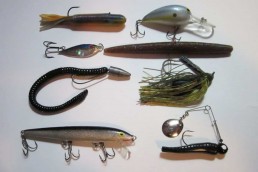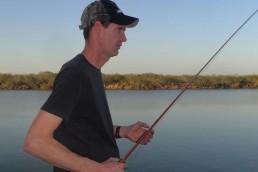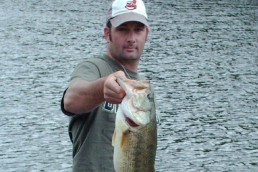Top Three Largemouth Myths Explored
SHARE THIS POST
I’ll tell you a big secret about largemouths—they are not that smart. And at the risk of sounding foolish, I’m going to outline the three big bass myths that I’ve encountered.
Myth #1: Bass fishing requires a great deal of lures.
My advice is simple: If your presentation revolves around several lures, it’s quite difficult to be productive with all of them—bearing in mind you’re a regular angler with the “average” amount of time allowed to experiment. The most documented Midwest bass catchers have been around quite a while. Sure, there are a few lures many can think of that are not on this list. But what I’ve compiled spans back through 16 years of selling tackle. This is simply a list of top lures and rigging options that have been proven producers. The most recent addition is the wacky worm, which may be the most versatile bass-producing lure ever. A condensed assortment seems small compared to the lure choices today, and I have absolutely no doubt in the future there will be new lure standbys created. The goal of creating a list is to assist in the challenge in your lure selection. When you believe or know fish are in a certain location, often, returning to core presentations is the thing to do. Perhaps your area has its own magic presentation, and the variations are inevitable. Bass geography has a great deal to do with what they desire to eat.
Myth #2: Heavy baitcasting tackle is required for bass around cover.
If casting gear with heavy braided line is working for you, than that’s good—do not switch up. But bear in mind the growing trend with anglers is deviating from standard casting gear with heavy line and instead switching to spinning gear spooled with copolymer fluorocarbon-coated line. It doesn’t reflects light in the water, yet is amazingly abrasion-resistant and strong. More frequent inquisition into this rigging seems to indicate a new trend in Midwest bass fishing.
Myth #3: Bass scent is a key variable in this species striking a lure.
Oddly enough, I recently previewed a bass book from a reputable publisher. The author mentioned that scent was the primary sense factor bass use to feed. I would disagree, but a veteran angler I know swears his bass catches are the highest they have ever been with crawfish-concentrated lure sprays.
Are you enjoying this post?
You can be among the first to get the latest info on where to go, what to use and how to use it!
I’ll break it down like this: I ask someone, “What about sight, sound, and the lateral line senses?” Inevitably, we can arrive at the notion that culminations of all those should outweigh the scent factor. Remember, in bass fishing there are no hard and fast rules. But I’ll add to the conversation by noting four scent facts I have learned:
- My biggest bass was caught on a garlic and salt-infused worm.
- There are years when an anise scent outfishes all other scents.
- Wave Worm’s Mopolo scent seems to outfish all others that I’ve tried in the past three years.
- Based upon those findings, scent certainly plays a role in bass feeding.
The best bass anglers work a relatively simple game plan, which varies from season to season. Always use tackle you are comfortable with and lures you find the most fun. There’s too much work out there for us as it is, and that is why bass fishing provides not only the recreation we all need, but also offers something arcane that keeps us coming back.
Bonus myth: The largemouth cousin, the “bronzeback” smallmouth, gets more prestige.
Fly fishing for steelhead and rainbow trout just sounds like more of a “romantic” fish pursuit. But I was going after these fish before I reentered the world of largemouth bass. Now, it’s almost 10 years later, and I have yet to turn back around.
MWO
SHARE THIS POST
Did you enjoy this post?
You can be among the first to get the latest info on where to go, what to use and how to use it!
Frank Racz
With almost two decades of fishing retail knowledge, Frank Racz’s dedication to the “stitching technique” has led to a modern Midwestern largemouth bass variant and bluegill pursuits. He is avid about the techniques’ multispecies potential and other long spinning rod inquiries featured on his YouTube channel.



